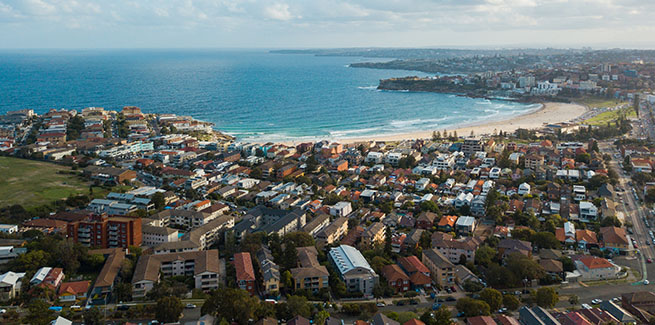According to property research group CoreLogic’s latest Hedonic Home Value Index, national home values fell 0.4 per cent in August, marking the fourth monthly decline since the onset of the COVID-19 crisis.
The national decline continues to be driven by subdued transaction activity across Australia’s largest capital cities along the east coast, with Melbourne recording the sharpest fall in property prices in August (1.2 per cent), followed by Sydney (0.5 per cent) and Brisbane (0.1 per cent).
Conversely, dwelling values were stable in Adelaide and Perth, and increased in Darwin (1.0 per cent), Canberra (0.5 per cent) and Hobart (0.1 per cent).
Reflecting on the monthly result, CoreLogic’s head of research, Tim Lawless, said the disparity in price trends across Australia’s capital cities is “intrinsically linked” to each market’s exposure to the COVID-19 pandemic.
“It’s not surprising to see Melbourne as the weakest housing market considering the extent of the virus outbreak and subsequent restrictions, which have weakened the economic performance of Victoria,” Mr Lawless said.
“Looking forward, we are likely to see a diverse outcome for housing markets around Australia, depending on how well the virus is contained and the region’s exposure to other factors such as its reliance on overseas migration as a source of housing demand.”
Mr Lawless added that weak consumer confidence in response to continued uncertainty would weigh on demand for housing in the coming months and dampen the seasonal increase in transaction activity.
“The spring selling season is likely to be less active than normal this year,” he said.
“Spring is a period where the housing market typically becomes more active, from both a sales and listings perspective.”
“Heading into spring, the trend in advertised listing numbers and home sales is trending in the opposite direction; new and total listing numbers are reducing and sales activity slipped by an estimated 1.9 per cent in August.”
Looking ahead, the CoreLogic analyst said that while federal government stimulus and loan repayment holidays have helped soften the impact of the pandemic on the housing market, conditions would deteriorate once such measures taper off.
“Considering fiscal stimulus polices are set to reduce at the end of this month and lenders will be conducting six-month check-ins with borrowers taking a repayment holiday, the downside risk to home values remains high,” he said.
“The federal budget, to be announced on [6 October], should help to provide further guidance on the direction of housing markets.
“Additional policy measures aimed at stimulating housing activity could help to support Australia’s economic recovery.”
AMP Capital chief economist Shane Oliver agreed, adding that prices would continue to fall over the next six to 12 months.
“High unemployment, the collapse in immigration – which has reduced underlying dwelling demand by around 80,000 dwellings a year – and the depressed rental market will likely combine to drive weak housing demand and increased forced sales into next year,” Mr Oliver said.
“JobKeeper, increased JobSeeker, bank payment holidays and other support measures have so far helped head off a sharp collapse in prices, but the market has still weakened anyway in Melbourne and Sydney, and we expect further falls as support measures start to be tapered from the December quarter.
“Sydney and Melbourne are the most vulnerable given their higher dependence on immigration, higher debt to income ratios, higher house price to income ratios, greater investor penetration and a possible preference shift away from expensive inner-city property.”
Mr Oliver continues to forecast an average peak-to-trough decline in home prices of 10 to 15 per cent, before stabilising in the second half of 2021.
[Related: Weaker listings to linger after lockdown 2.0]
 ;
;
